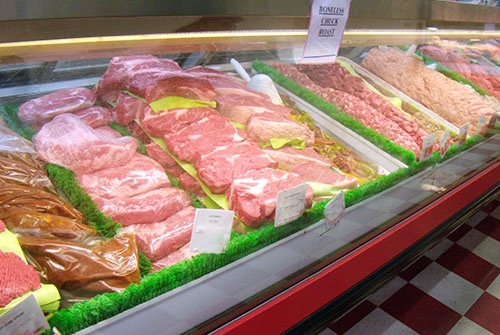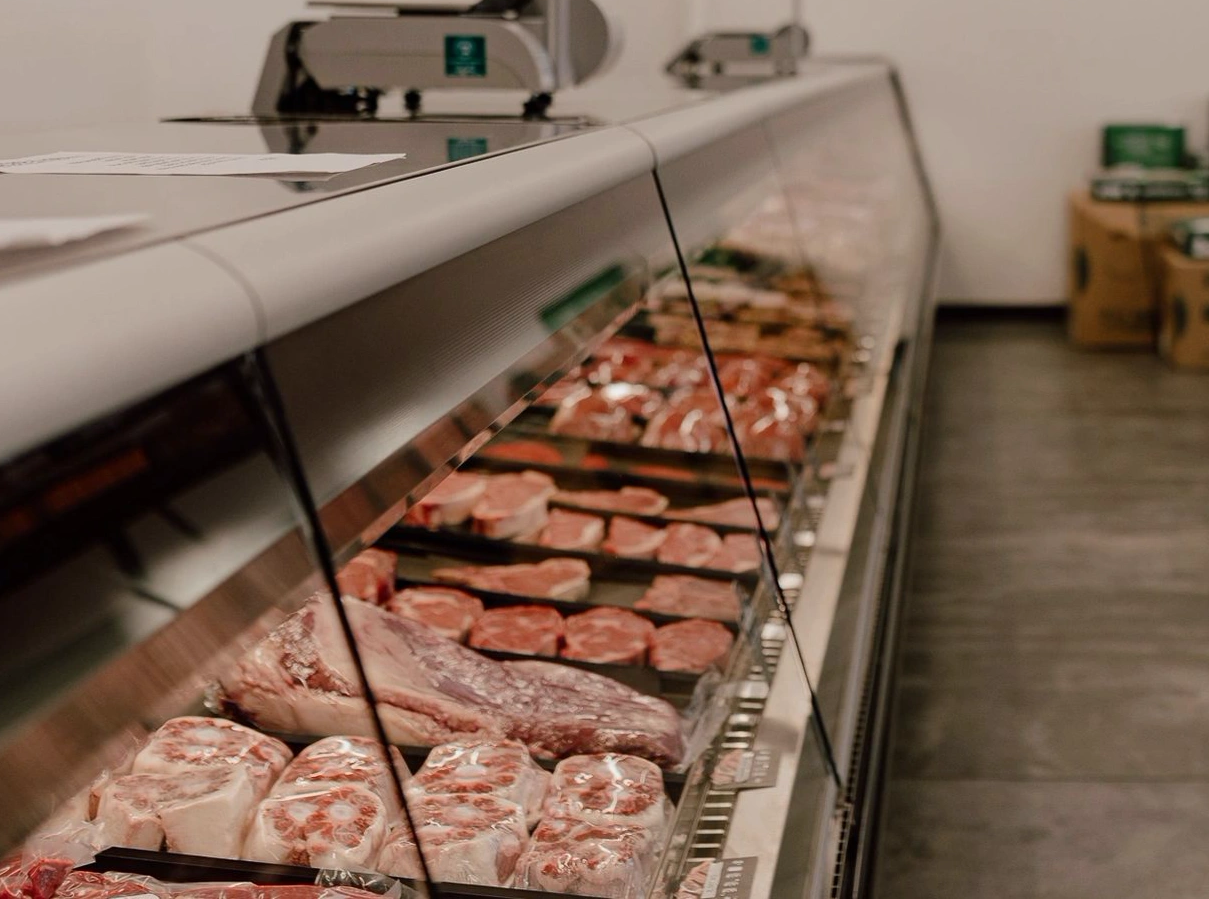What Makes Bagley Farms Meat Market Edwardsville IL Stand Apart for Meat Lovers
What Makes Bagley Farms Meat Market Edwardsville IL Stand Apart for Meat Lovers
Blog Article
Uncover the Art of the Butcher's Cut in a Modern Meat Market
In the ever-evolving landscape of modern-day meat markets, the butcher's cut has actually transcended its traditional origins, merging old-time craftsmanship with modern techniques. bagley farms meat market edwardsville il. Today's butchers are not just cpus of meat; they are experienced craftsmens that stress sustainability and honest sourcing. Their competence in selecting and preparing cuts tailored to particular culinary requirements supplies an exceptional dining experience. Yet, what really establishes the modern butcher apart is their ability to create a much deeper link between consumers and the origins of their meat. Just how do these masters equilibrium custom with advancement, and what ramifications does this have for the future of meat intake?
Evolution of Butchery Methods

The mid-20th century saw butchery techniques additionally fine-tuned by scientific insights into muscular tissue biology and meat aging, boosting both inflammation and taste. Technologies like vacuum packaging and refrigeration prolonged product shelf-life, allowing butchers to branch out offerings and enhance quality assurance. This duration additionally marked the rise of specialized equipment, such as band saws and meat slicers, which raised accuracy and effectiveness in meat processing.
The 21st century has actually presented electronic innovation into the butchery world. Computerized systems now aid in monitoring animal provenance and enhancing cuts to satisfy particular client preferences. Furthermore, a rebirth in artisanal butchery has arised, mixing standard skills with modern knowledge to accommodate customers seeking moral and sustainable meat alternatives. This advancement underscores a vibrant interaction between custom and innovation, meeting modern needs while protecting the craft's heritage.

Understanding Meat Cuts

Recognizing the ins and outs of meat cuts is necessary for both butchers and consumers looking for high quality and value. For butchers, precise cuts reflect skill and respect for the craft, making sure minimal waste and optimal yield.
The main categories of meat cuts consist of primitive, sub-primal, and retail cuts. Butchers then damage these down further into sub-primal cuts, before lastly creating retail cuts offered to customers, like ribeye or tenderloin.
Understanding muscle mass structure is essential; muscular tissues used extra regularly by the pet often tend to be tougher and are best suited for slow-moving food preparation methods, while less-used muscles, like those located in the loin, are extra tender and perfect for barbecuing or roasting. Knowledge with these differences encourages customers to make informed choices, improving their culinary ventures.
Choosing Top Quality Meat
Selecting the appropriate meat involves greater than just picking an aesthetically attractive piece from the screen. The art of choosing quality meat calls for a discerning eye and understanding of particular characteristics that represent freshness and quality. First of all, take note of the color; beef must have a brilliant, cherry-red color, while lamb should display a soft pink tone, and pork a light pink. This shows the meat is fresh and hasn't been exposed to oxygen for too lengthy.
Second of all, consider the marbling, which refers to More Bonuses the white streaks of fat within the muscular tissue. Correct marbling is a key indication of inflammation and flavor, as it melts during food preparation, boosting the meat's juiciness. Remember, greater marbling often associates with premium high quality cuts, such as USDA Prime.
Texture is one more important factor; meat ought to feel firm to the touch, not slimed or extremely soft. In addition, bear in mind the fragrance. Fresh meat ought to have a tidy, neutral odor, without any type of sour or off-putting smells.
Matching Cuts With Food Preparation Methods
Successfully pairing cuts of meat with the ideal food preparation methods is vital for attaining ideal taste and appearance. These techniques improve the meat's natural tastes and make certain a juicy coating.
Conversely, tougher cuts like brisket and chuck roast are rich in collagen, which breaks down into gelatin when prepared gradually. These cuts are suitable for braising or slow roasting, permitting the meat to soften over time and create deep, complicated flavors. Likewise, cuts such as brief ribs and pork shoulder get on well with slow-cooking approaches, where expanded cooking times transform their durable textures into succulent meals.
Lamb shanks and oxtail, which need extended cooking to soften, are excellent prospects for stewing or slow simmering. These approaches coax out rich, hearty tastes while preserving moisture. By understanding the distinct attributes of each cut, chefs and home chefs alike can raise their culinary productions, ensuring each recipe is both satisfying and remarkable.
The Butcher's Duty Today
Browsing the progressing landscape of the modern meat market, the butcher's function today extends past plain preparation of cuts. Contemporary butchers are culinary craftsmens, educators, and advocates for sustainable techniques.
Along with crafting specific cuts, butchers now engage straight with consumers, providing cooking suggestions and tailoring choices to fit specific needs and preferences. Their knowledge in meat aging, marbling, and taste accounts empowers consumers to make educated choices, boosting their culinary experiences. This tailored service exemplifies the butcher's progressing role as a trusted consultant in the kitchen.
In addition, butchers are essential in reducing waste, making use of entire animals to produce diverse products such as sausages and supplies - bagley farms meat market edwardsville il. This detailed method not only appreciates the animal however additionally straightens with modern sustainability objectives. By doing this, the modern butcher symbolizes both tradition and pop over to this site development, adjusting to an ever-changing market while protecting the virtuosity and integrity of their craft

Final Thought
The contemporary butcher's craft elaborately weaves traditional techniques with modern-day developments, emphasizing lasting practices and ethical sourcing. Mastery in my sources understanding varied meat cuts and quality indications empowers butchers to provide informed referrals, lining up particular cuts with ideal food preparation methods. This knowledge not only raises cooking experiences yet also strengthens the connection between consumers and the origins of their food. By honoring historic techniques while embracing contemporary needs, the butcher's function continues to be vital in today's innovative meat market.
Report this page